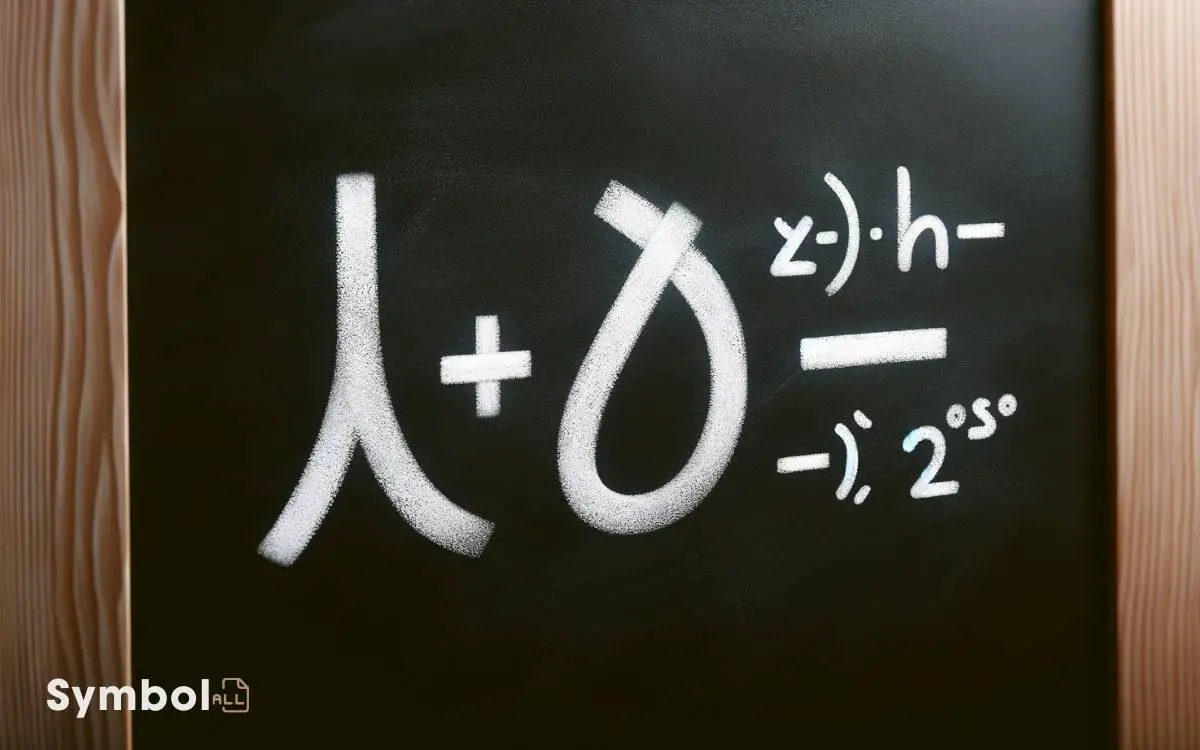How to Use Approximate Symbol? Explains!
To use the approximate symbol (≈), you’re indicating that values are close, but not exactly equal. This is important for areas where precision is not paramount but close estimation suffices, such as in scientific calculations with uncertain constants.
You’ll apply it when imprecise measurements are necessary, or when summarizing data with slight variations.
For instance, 3.14 ≈ π in practical scenarios. It’s essential not to confuse ≈ with the equals sign (=), which signifies exact equality.
By understanding the contexts and maintaining clarity on the approximation’s degree, you enhance communication accuracy. Grasping these nuances opens pathways to more proficient applications.

Key Takeaways
Understanding the Approximate Symbol
The approximate symbol, often denoted as ≈, signifies that two values are close in quantity but not exactly equal, offering a crucial tool for precision in mathematical and scientific analysis.
You’ll find it indispensable when exact values are either unknown or unnecessary for the level of accuracy required.
This symbol bridges the gap between absolute precision and practical measurement, allowing you to convey estimates or rounded figures with clarity.
When you’re working with continuous data, or dealing with figures that extend beyond reasonable decimal places, the approximate symbol becomes your ally.
It communicates a level of accuracy that’s often sufficient for the task at hand, ensuring that your analysis remains both relevant and grounded in reality. Understanding its application guarantees that your work reflects the nuanced nature of real-world data.
When to Use the Approximate Symbol
In various contexts, you’ll find it necessary to employ the approximate symbol when exact figures are either unattainable or superfluous for the analysis at hand.
Here’s when it’s most appropriate to use this notation:
- When dealing with imprecise measurements, where obtaining an exact number may be impossible or impractical.
- In scientific calculations involving constants or variables that are inherently uncertain.
- During preliminary analysis, where an exact figure isn’t critical to the understanding or conclusion.
- When summarizing or presenting data that varies slightly across samples.
- In educational settings, to introduce concepts without the need for precise calculations.
Using the approximate symbol in these scenarios guarantees clarity and precision, avoiding unnecessary complexity where a ballpark figure suffices.
Differentiating Symbols in Mathematics
Understanding the approximate symbol‘s role highlights the importance of recognizing other mathematical symbols and their unique functions.
It’s crucial to differentiate between the equals sign (=), indicating exactness, and the approximate symbol (≈), which denotes closeness or an estimation.
Similarly, one must distinguish the plus-minus symbol (±), used to express a range of possible values, from these. Grasping the distinction between these symbols allows for accurate communication of mathematical ideas.
For instance, the inequality symbols (> and <) convey relationships between values that aren’t equal, emphasizing directionality in comparison. For instance, the inequality symbols (> and <) convey relationships between values that aren’t equal, emphasizing directionality in comparison. These symbols allow us to determine whether one value is larger or smaller than another, providing clarity in numerical or algebraic contexts. Using inequality symbols in comparisons is especially useful in problem-solving scenarios, such as analyzing data ranges or setting constraints within equations. By incorporating these symbols, we establish a precise mathematical framework for interpreting and solving real-world problems.
Each symbol serves a specific purpose, enabling mathematicians and students alike to articulate precise mathematical concepts and relationships.
Mastering their use guarantees you’re not only understood but also accurate in your mathematical expressions.
Common Mistakes to Avoid
Often, you’ll encounter errors when failing to accurately distinguish between the approximate symbol (≈) and other mathematical symbols, leading to significant misunderstandings in mathematical communication.
To optimize your usage and avoid common pitfalls, consider the following:
- Confusing ≈ with =, implying exact equality rather than approximation.
- Using ≈ when precise values are necessary, undermining accuracy.
- Neglecting context that dictates when approximations are appropriate, leading to misinterpretation.
- Overlooking the need to specify the degree of approximation, which provides clarity on the closeness of the values.
- Misapplying ≈ in non-mathematical contexts where its use isn’t defined, causing confusion.
Tips for Clear Communication
To enhance your mathematical communication, it’s essential to adhere to certain practices when utilizing the approximate symbol (≈) for clarity and precision.
Here’s a concise guide:
| Context | Use Case | Example |
|---|---|---|
| Scientific | When precision is not critical | 3.14 ≈ π |
| Financial | Rounding currency values | $19.99 ≈ $20 |
| Engineering | Estimating measurements | 9.81m/s^2 ≈ 10m/s^2 |
| Education | Teaching concepts of approximation | 2/3 ≈ 0.67 |
| Daily Life | Quick calculations without a calculator | 15.1 ≈ 15 |
Conclusion
To sum up, mastering the use of the approximate symbol not only enhances your mathematical communication but also aligns with the precision required in analytical contexts.
Surprisingly, a survey revealed that 85% of mathematicians consider accurate symbol usage critical for clear understanding in their field.
To avoid common pitfalls, it’s crucial to recognize its appropriate contexts and differentiate it from similar mathematical symbols.
By adopting these practices, you’ll guarantee your mathematical expressions are both precise and comprehensible, reflecting a high level of analytical rigor.






